![]() Mysterious signals on 160 meters
Mysterious signals on 160 meters
On October 30, 2006 I completed the installation of a pair of K9AY loops oriented at right angles to each other. It was similar to the RX antenna I had used during the Winter of 2005-06 but constructed with greater care and located further from my transmitting antennas and other structures and trees. The control wires and feed line were buried between the shack and the base of the antenna.
When I had completed the construction I listened to the antenna with an FT-1000MP radio. I was stunned to find that there were signals every 4 kHz across the 160 meter band. I checked further and found that these signals could be heard down to 1710 kHz (where the US broadcast band ends) and up at least to 3 MHz. I went through a series of checks to verify that the loops were not generating the strange, new signals. The signals had not been present during the previous Winter [or at least I had not heard them]. The background noise using the loops was very low -- much lower than I had recalled from the previous year. I used my 80 meter dipole (center at 50 feet) to listen on 160 meters and could faintly hear the same 4 kHz apart signals. I tried using my two element 40 meter beam as an RX antenna and found I could very faintly hear the 4 kHz apart signals with it too. In previous tests with these antennas I had never noticed these signals, but the 4 kHz signals were quite weak when these two antennas were used for 160 meter RX and it is possible I was not listening carefully enough last year to hear them.
I could hear the signals on the dipole and beam even when the K9AY loops had been disconnected so they were nothing but open lengths of wire that did not connect to a feed line or to the earth and the feed line and control wires were disconnected from everything so they were simply floating. At this point it seemed reasonable to assume that the signals were generated by some separate piece of equipment and not by intermod associated with the K9AY installation.
I decided to look at the signals received on the K9AY loops with a spectrum analyzer [HP-141T; 8553B; 8552B]. The sweep calibration of my spectrum analyzer is off a bit for very narrow sweep ranges (20 kHz down to 100 Hz) , but that did not seem to be a limitation for looking at such signals as these. I could hear the signals very easily on the receiver. They were S7 and separated by exactly 4 kHz. [maybe a few Hz change from one signal to the next according to my ear, but no more].
The signals are present 24 hours per day. I have turned off almost everything in the house while listening and the signals still are present. They are present on an ICOM-706 as well so I have ruled out that they are generated internally by the FT-1000MP. Although I still need to shut down the power mains of my house and see if the signals are still present, I fear that they are external to my house and my property. If that is the case it would help the search if I had an idea of what kind of device emits signals like this and in the frequency range that I am finding them. I have looked for the signals at frequencies below 500 kHz and I do not see them on the spectrum analyzer. I do not hear them on 80 meters, but it may be that they are so weak above 3.5 MHz that I can not pull them out of the noise.
If anyone has an idea of what might produce these signals I would very much appreciate hearing from you by email => tod@k0to.us
__________________________________________________________________________________________________________________
The six pictures following show scans made November 6, 2006. They should give persons reading this an idea of what the signals look like.
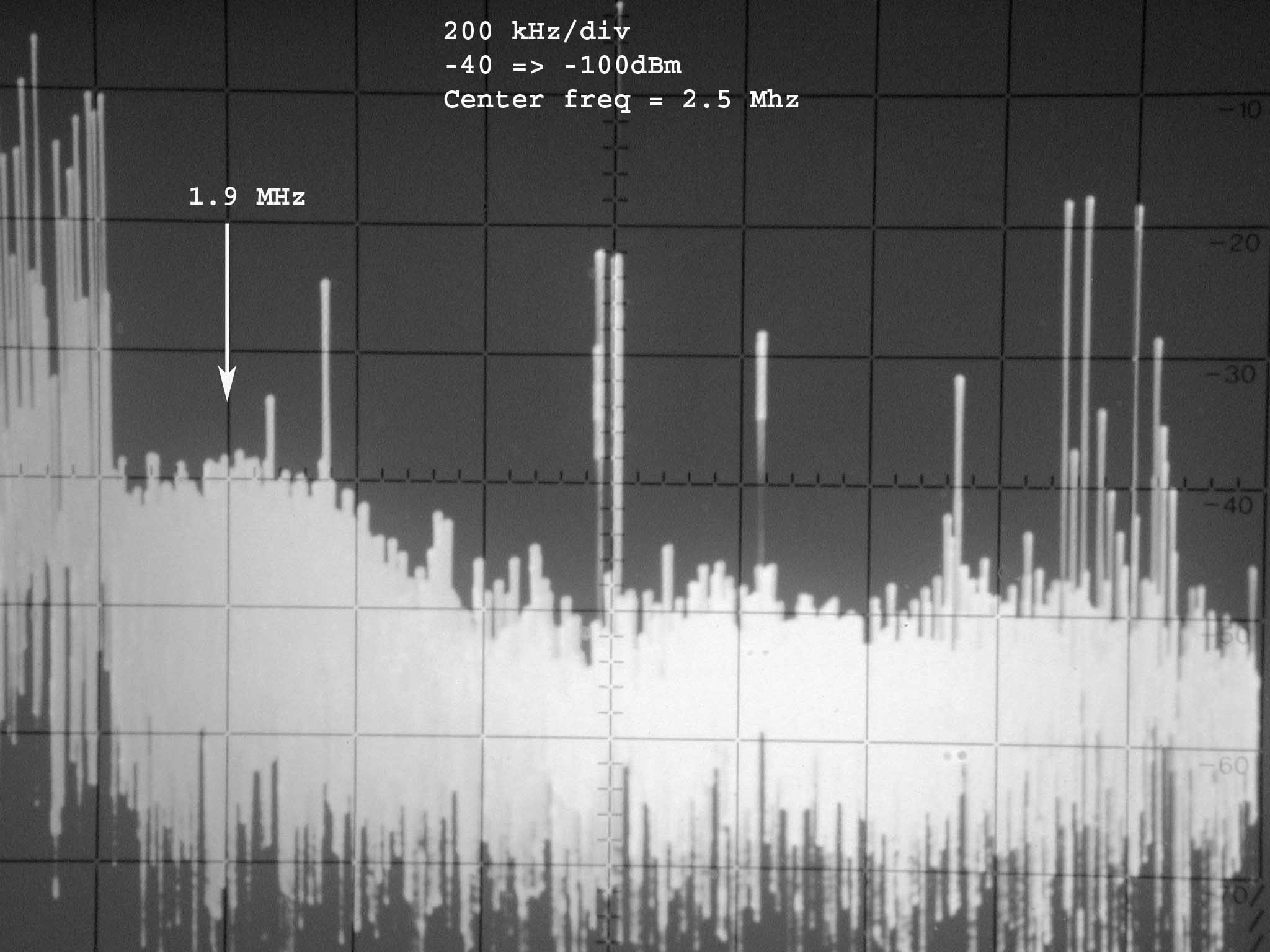
Figure 1. This picture shows a scan of frequencies from the top of the US
broadcast band at 1.7 MHz to 3.5 MHz. The noise rolls off rapidly after 2.0 MHz.
These signals are directly from the loop with no pre-amplification or filtering
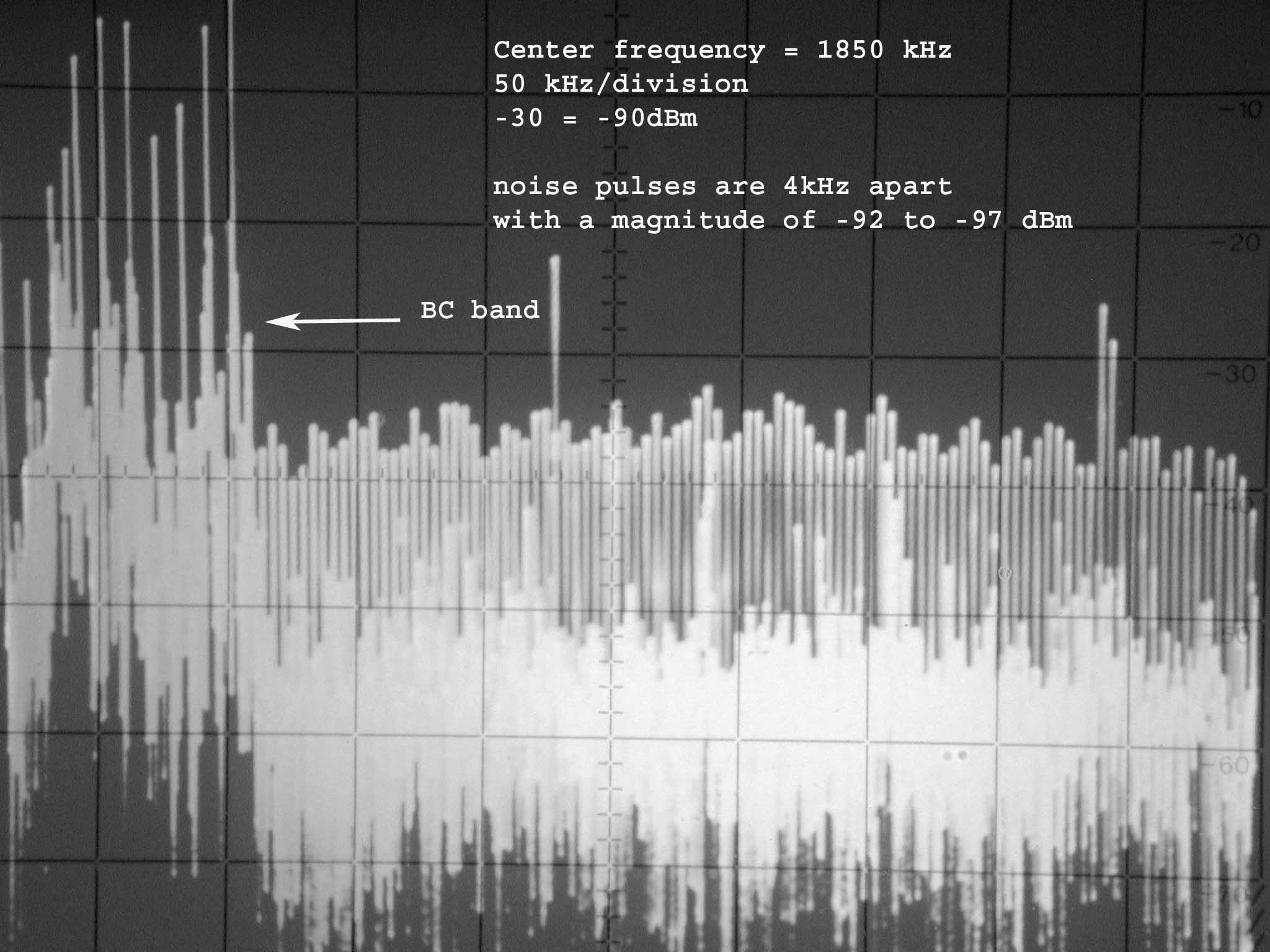
Figure 2. This picture shows the scan from the top of the US broadcast band
to 2.1 MHz. The center frequency is 1850 kHz in the 160 meter band. The noise
pulses are relatively uniform across the amateur band.
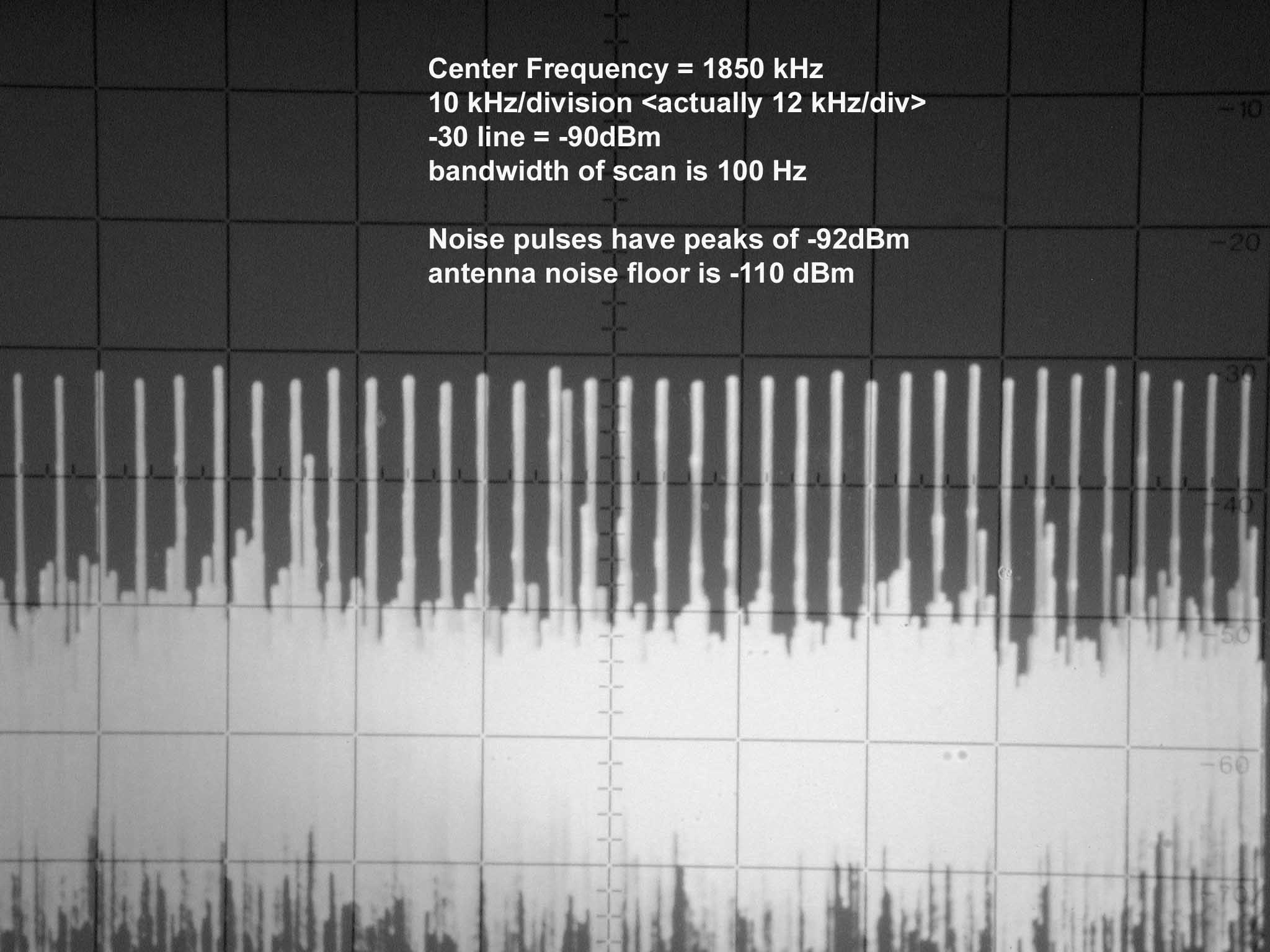
Figure 3. This scan looks at a smaller segment of the 160 meter band. I covers
the range from 1800 to 1900 kHz. The noise pulses are well above the atmospheric
noise and after pre-amplification so that the noise is about S0 the peaks are at
S7 on my FT-1000MP.
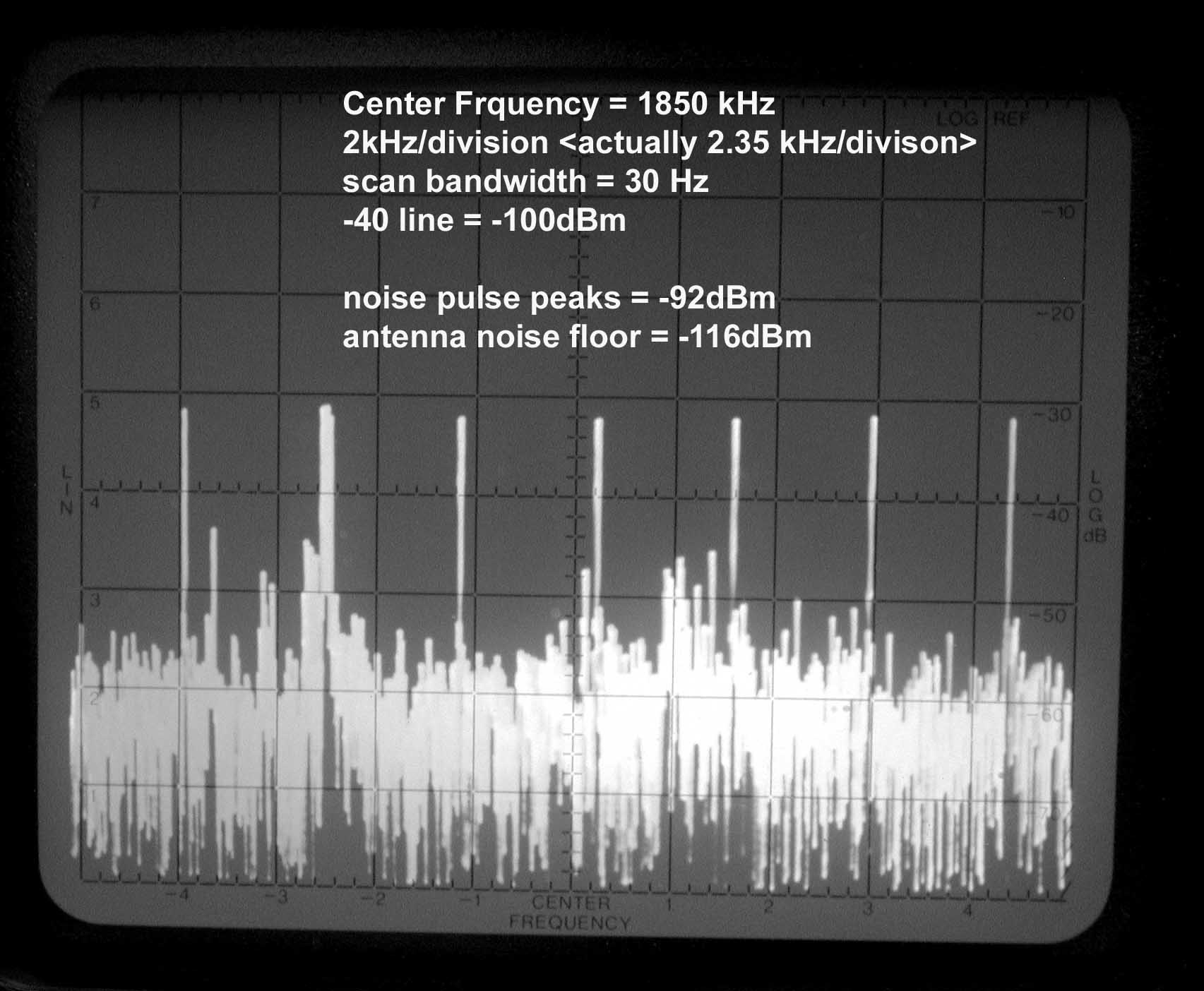
Figure 4. This scan shows a still smaller segment of the 160 meter band. With
narrow scan bandwidth the noise pulses are very prominent.
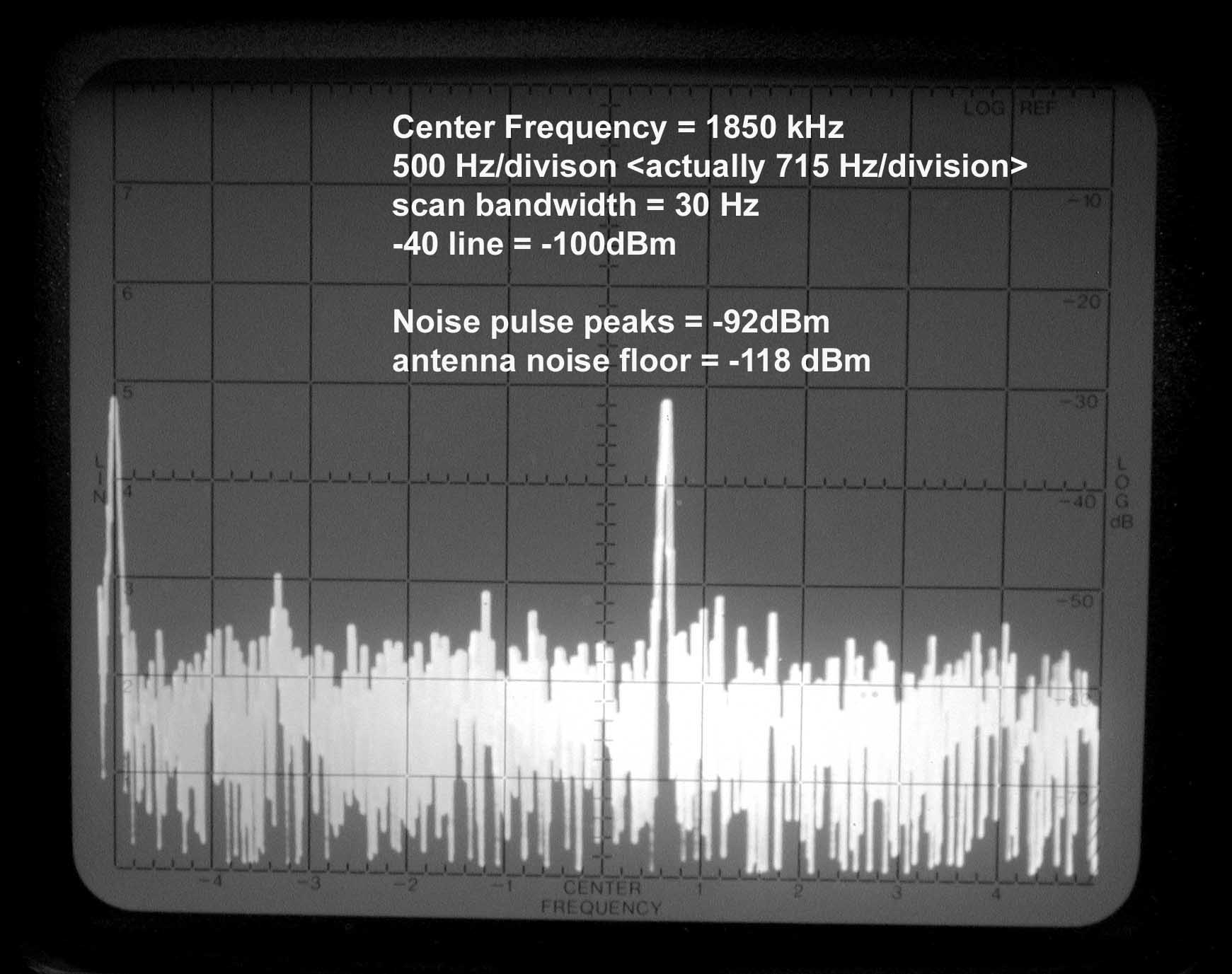
Figure 5. A still smaller piece of spectrum is scanned. The narrowness of the
pulses is very evident.

Figure 6. In this very narrow scan of the frequencies near 1850 kHz we can see
the nature of a single pulse. I estimate the -3 dB width as 18 Hz and the -30 dB
width as 48 Hz. A very sharp pulse.
Version 1.0 posted November 7, 2006
Version 2.0 pictures posted Nov 7, 2006
These scans were made on Nov 7, 2006.
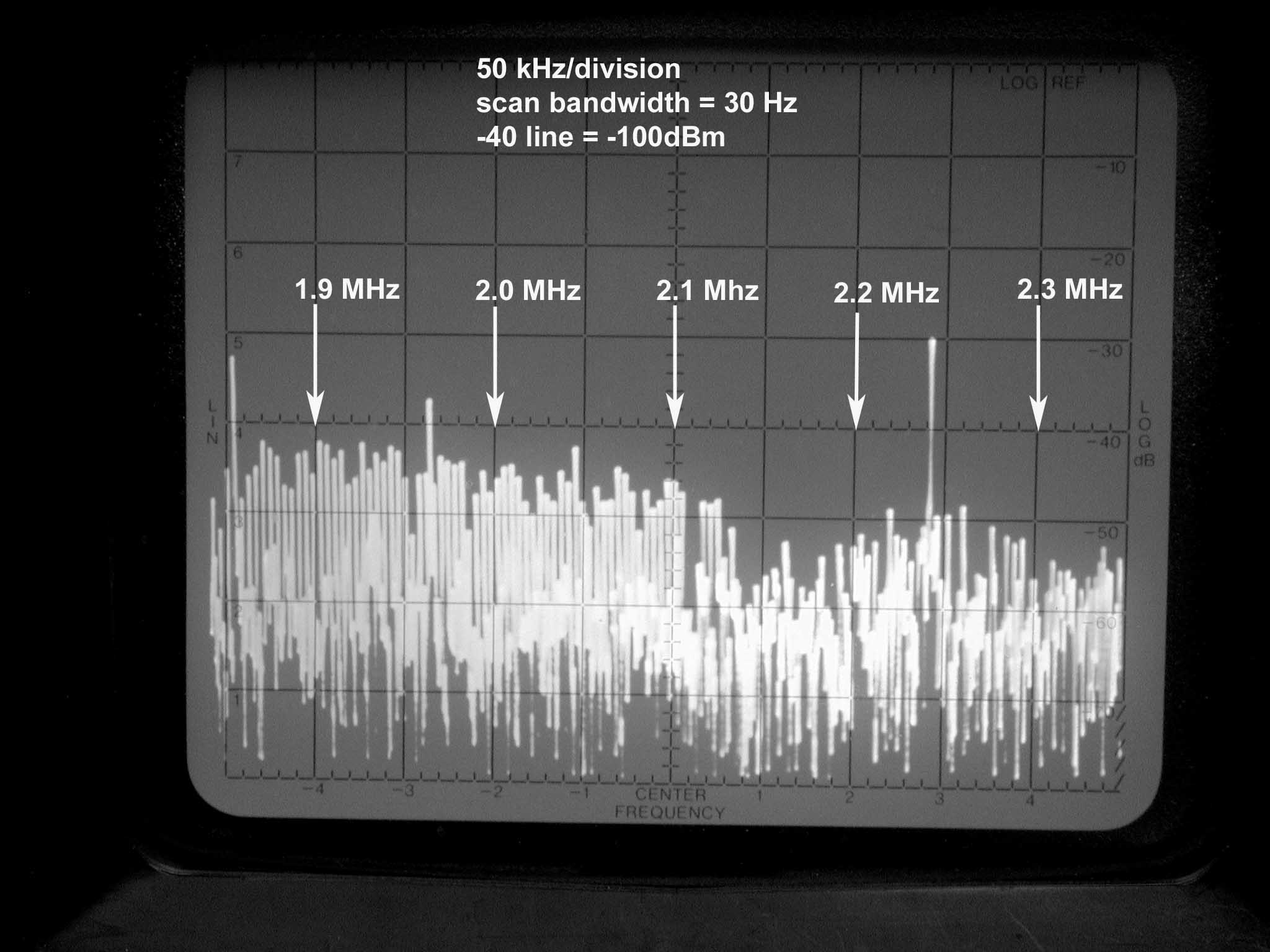
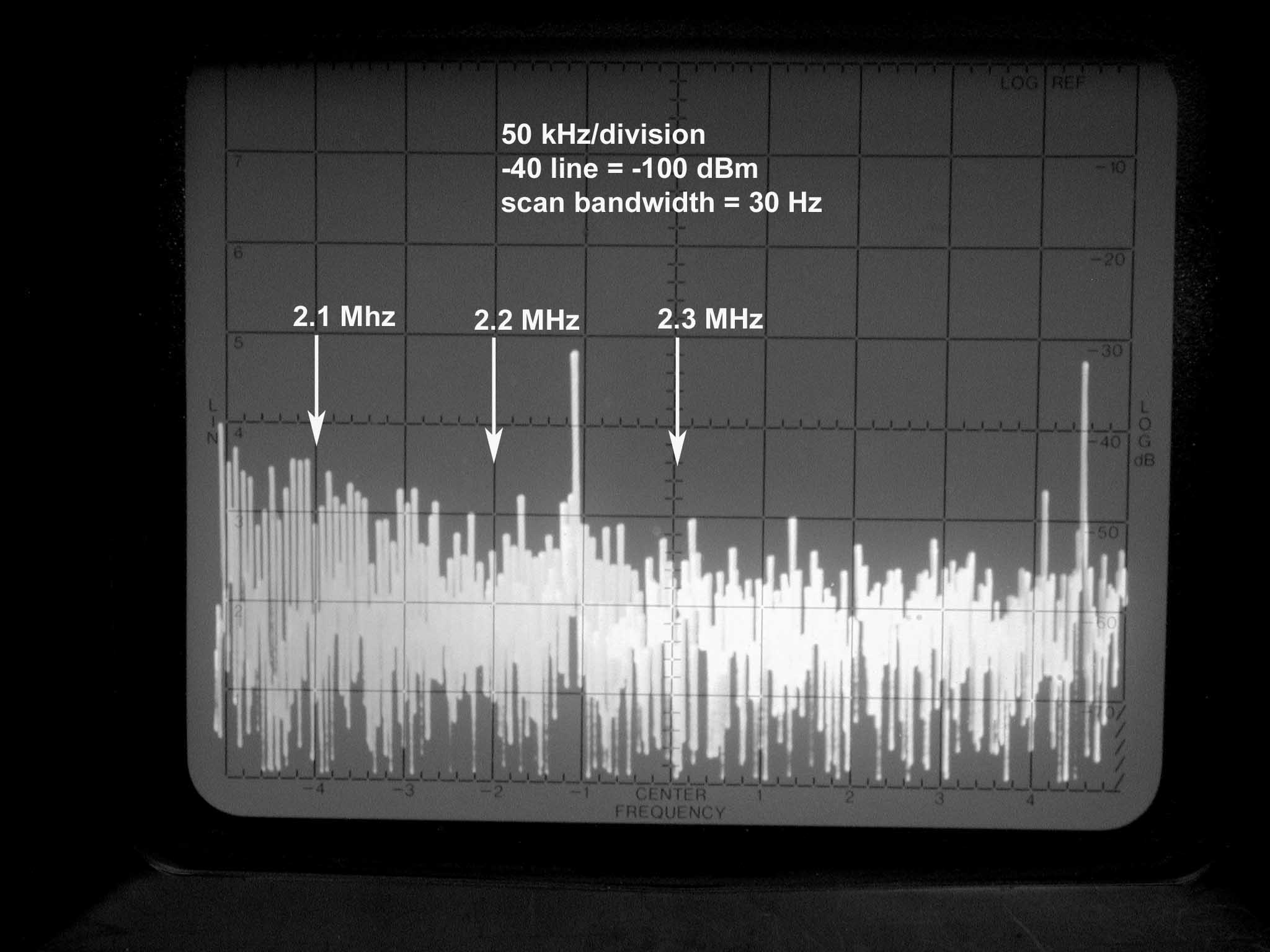
Figure 7 Figure 8
Figures 7 and 8 show the decrease in amplitude of the noise pulses as the frequency changes from 1.9 MHz to 2.3 MHz. While the pulse can be heard up to at least 2.3 MHz, they are much more difficult to pull out of the noise. At 2.3 MHz it really is necessary to use the 250 Hz filters of the FT-1000MP.